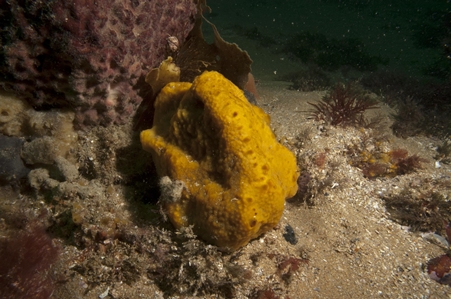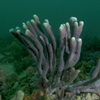General Description
An orange, massive sponge species. Size of about 15 cm.
Habitat
Reef and sandy areas, at depths of 3-40 m.
Sponge gardens
Reefs
Soft substrates
Distribution guide
Southern Australia.
Species Group
Depth
Shallow (1-30 m)
Deep ( > 30 m)
Water Column
Max Size
15 cm
Diet
Plankton or particles
Commercial Species
No
Global Dispersal
Native to Australia
Identify
Conservation Status
- DSE Advisory List : Not listed
- EPBC Act 1999 : Not listed
- IUCN Red List : Not listed





